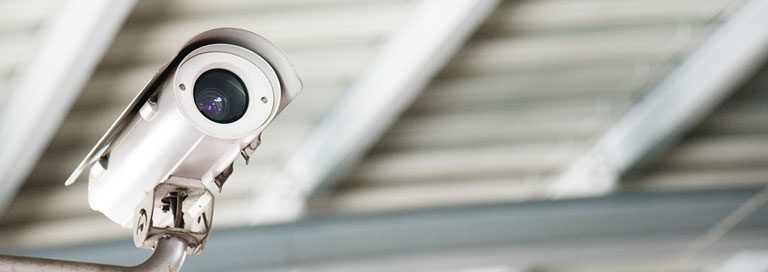IP-based video surveillance solutions provide greater flexibility and functionality than traditional analog systems.
Video surveillance cameras have become a ubiquitous part of the landscape as organizations and consumers alike seek to deter crime and document security-related events. The mere presence of surveillance cameras is proven to reduce the risk of vandalism and petty theft. Video surveillance also makes it possible to monitor critical areas, capture evidence of suspicious activity, and track offenders and their vehicles.
But the value of video surveillance isn’t limited to premises security. Many cities have implemented video surveillance for traffic control, while manufacturers are using it to monitor production for safety, quality assurance and regulatory compliance. Retailers are employing video surveillance for people counting, queue counting and dwell time analysis as well as for loss prevention.
Analog surveillance systems digitize the video captured by cameras and store it on DVRs that may be attached to the data network. DVR systems enable remote monitoring, provide consistent recording quality and eliminate the need to swap out video tapes. Digitization makes it easier to search the recorded video.
Increasingly, however, video surveillance cameras are connected directly to the IP data network. Networked video surveillance provides a host of benefits, including exceptional image quality, streamlined monitoring and management, greater flexibility and scalability, and advanced analytics capabilities. As a result, IP-based solutions dominate today’s video surveillance market, and many organizations are migrating from traditional analog systems.
More Capabilities, Lower TCO
IP cameras offer many times the resolution of their analog counterparts. While most analog cameras provide resolution of about .3 megapixel, HD IP cameras offer resolution of more than 2 megapixels and the latest 4K cameras provide resolution of 8 megapixels. Some IP cameras offer wide-angle and even 360-degree views, minimizing blind spots and providing clarity at the edges of panoramic images.
A study conducted by Lusax, a research group at the Lund University School of Economics and Management in Sweden,found that IP cameras cost about 50 percent more than analog cameras. However, greater resolution and wider field of view reduce the number of cameras required for full coverage.
Furthermore, the cost of data storage is significantly less with IP-based systems. DVRs tend to use proprietary technology that’s more expensive than commodity servers and storage. The Lusax study found the total cost of ownership (TCO) of IP-based systems to be about 11 percent to 16 percent less than analog systems, with greater savings for larger numbers of cameras.
Reduced TCO isn’t the only value of IP video surveillance. When video surveillance is another application on the network, it can be monitored and managed using virtually any connected device, and integrated with other applications. Power over Ethernet (PoE) network switches deliver electrical power over data cabling, reducing wiring costs and enabling more flexible placement of cameras.
IP-based systems are also more scalable than their analog counterparts. While DVRs have a finite number of ports for attaching cameras, there’s essentially no limit to the number of cameras that can be attached to the data network. Network storage can readily be scaled to accommodate spiraling volumes of video data, with the option of cloud storage for virtually unlimited capacity.
Greater Intelligence
Video analytics is another key advantage of IP-based surveillance systems. With analog systems, humans have to monitor the video to catch events in real time, or review stored video to reconstruct events after the fact. In addition to being labor-intensive, human monitoring is highly fallible. Personnel can easily miss developing events due to fatigue or because they’re looking at the wrong monitor at the wrong time.
Analytics software can monitor multiple video feeds simultaneously, and trigger an alert when potentially significant situations are detected. Analytics systems provide facial and license plate recognition, detection of objects taken or left behind, and more to support a wide range of security and operational use cases.
Significant advances in artificial intelligence (AI) and deep learning are rapidly advancing video analytics capabilities. Although forensic video analysis has been available for some time, research firm IHS Markit says that the accuracy of deep learning technology has greatly improved over the past two years, making it reliable enough to assist human analysts.
Deep learning video analytics products have already reached the market, with user-friendly interfaces and scenario-focused solutions. For example, deep learning facial recognition algorithms are now available in search-engine applications designed to find missing people from video footage.
As public- and private-sector organizations look to improve physical safety and security, the demand for video surveillance continues to increase. Organizations are also looking to leverage video surveillance and advanced analytics to improve their operations and better serve customers. IP-based systems, along with advanced AI and deep learning technologies, are rapidly changing how organizations view video surveillance.




